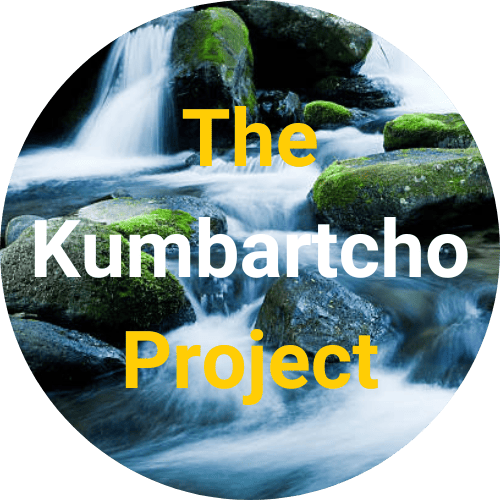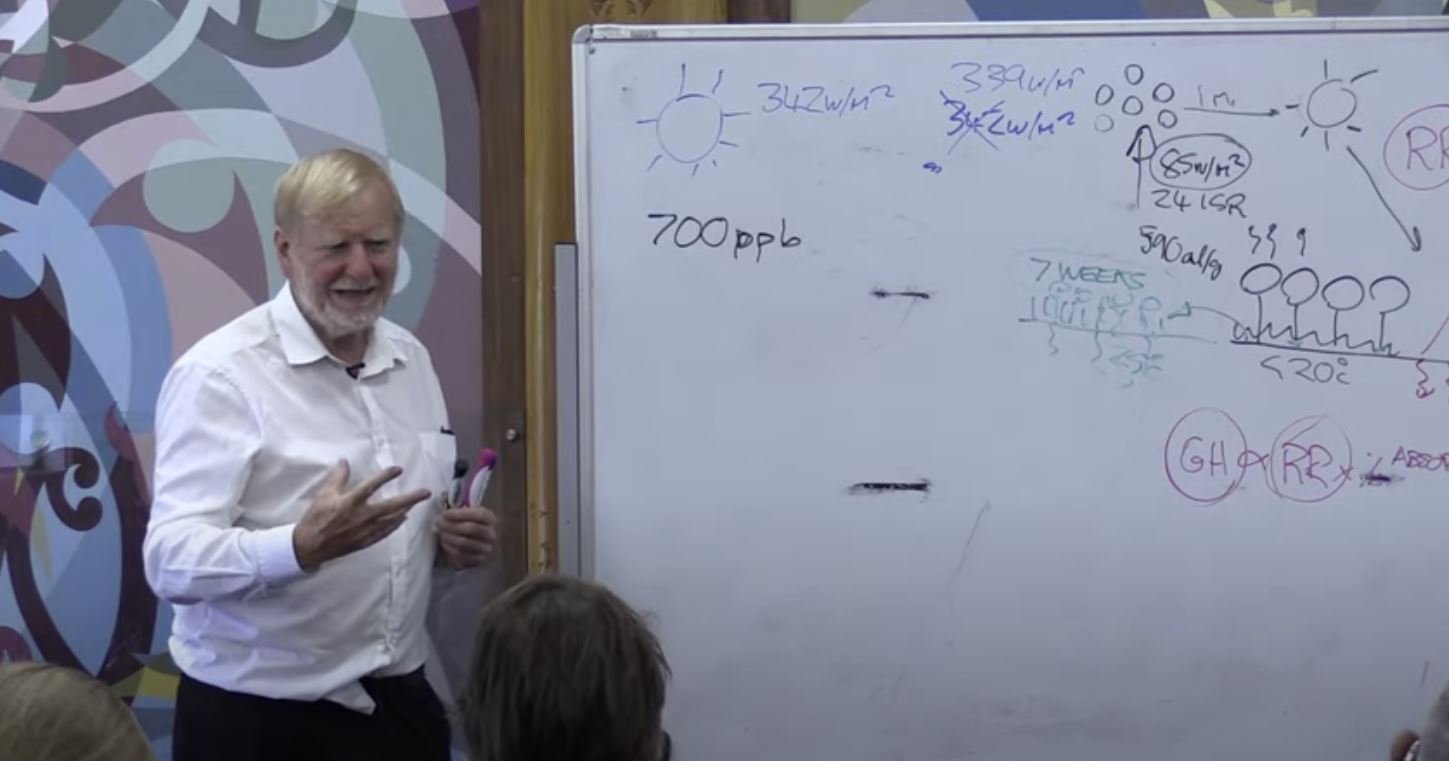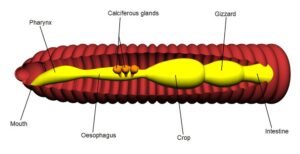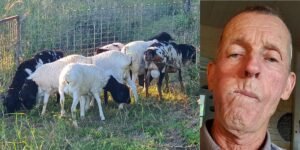This may change or confirm your opinion.
There is a lot of comment in the media and supposedly gospel information that methane farts and burps from cows is the prime cause of the growth of methane in the Earth’s atmosphere.
This is what is known as a straw man argument.
A straw man argument is a type of fallacy where you misrepresent your opponent’s argument to make it easier to attack and defeat. It’s like attacking a “straw man” instead of the actual person you’re debating with. Here’s how it works:
- Misrepresent the argument: You take your opponent’s argument and twist it, exaggerate it, or simplify it in a way that makes it weaker or easier to attack.
- Attack the misrepresentation: You focus on attacking this weaker version of the argument, pretending it’s the actual argument your opponent made.
- Claim victory: Since you’ve successfully “defeated” this misrepresented argument, you present it as if you’ve defeated your opponent’s actual argument.
Here are some key characteristics of a straw man argument:
- It misrepresents the opponent’s position: This is the key element of the fallacy. You are not actually responding to what your opponent is saying.
- It attacks an easier target: The misrepresented argument is usually weaker or easier to attack than the actual argument.
- It ignores the actual argument: You don’t address the real points your opponent is making.
- It creates a false impression of victory: By defeating the misrepresented argument, you create the illusion that you’ve won the debate, even though you haven’t addressed the actual issues.
Here are some examples of straw man arguments:
- Person A: “We should invest more in renewable energy.”
- Person B: “So you want to destroy the economy and leave everyone in the dark? Typical tree hugger!”
- Person A: “We should have stricter gun control laws.”
- Person B: “So you want to take away all our guns and leave us defenseless against criminals? Typical liberal!”
Why are straw man arguments harmful?
Straw man arguments can be harmful because they:
- Prevent productive debate: By misrepresenting and attacking their opponent’s arguments, people using straw man arguments make it difficult to have a meaningful discussion about the real issues.
- Spread misinformation: When people accept the false impression of victory created by a straw man argument, they may believe that the misrepresented argument is actually what their opponent believes, which can lead to the spread of misinformation.
- Undermine trust and respect: Straw man arguments can be seen as dishonest and manipulative, which can damage trust and respect between people with different viewpoints.
It’s important to be aware of straw man arguments and to avoid using them in your own discussions. If you encounter someone using a straw man argument, you can point out that they are misrepresenting your position and try to redirect the conversation back to the actual issues.
Who would make a strawman argument regarding methane increases in the atmsophere being caused by cattle?Could it be the fossil fuel industry trying to deflect criticism of their pollution contribution?
Real Facts About Methane From Cows
I have added these facts from the video below. A full transcript is below the video
- Anything with an anaerobic digestive system produces methane. (including humans)
- All through the last millions of years methane was 700 parts per billion in the atmosphere.
- So there wasn’t much methane in the air at all.
- The Earth was in balance.
- Millions of Herbivores biofertilized pastures that transpired water, more herbivores then than now.
- The sun hitting the trnaspried water molecules photo oxidize them and turn them into hydroxyl ions plus plus plus.
- Hydroxyl Ions are the laundry of the air. They gobble methane and particulates for lunch.The ratio of hydroxyl ions produced by the transpiration is 100 times greater than the methane from the cow.
- Photo oxidation process is what’s kept it at 700 parts per billion. Nature balancing.
- Photo oxidation process is a hundred to one compared to a cow managing that hectare of land.
- When the government wants to charge for methane emissions, cow farmers should invoice the government for 99 times the invoice for their cow’s management of grasslands and methane suppression via photo oxidation.
- Back in the 1990s methane went up to about 1600 parts per billion and in 2010-2020 it went up to 2300 ppm.
- Not pointing fingers, but 1990s increase was associated with USSR collapse. Russian oil fields were leaking 40% of their gas. Because they couldn’t afford, and didn’t do, and couldn’t organize their maintenance on the gas fields.
- And the 2300 ppm methane increase from 2010-2020 is again associated. Fracturing the Earth or fracking was gaining momentum at this time. Australia allows it and we’ve got records of fugitive emissions coming up from the soil in these frak gas fields.
- Both increases are nothing to do with cattle and methane.
- But there is a negative about cows. It is feedlots, where animals are in concentration camps, on concrete and feeding on starch, wheat, old phone books mixed with nitrogen.
Transcript of Walter Jehne on Methane
Food value now then there’s other people and we can talk about this. Actually it’s an important thing to talk about because these things produce methane. Okay and then people get all upset. Hey, these produce methane.
So we really should talk about methane because that’s important so we can take away the coral island and actually just look at methane because the point is, yeah they produce methane.
Anything with anaerobic digestion produces Methane
We produce methane. You know anything with anaerobic digestion obviously produces methane. But the point about methane is very significant because all through the last millions of years, methane was 700 parts per billion okay? 700 parts per billion. So there wasn’t much methane in the air at all.
And yet we had far far higher numbers of herbivores previously. Whether it’s the bison or the springbok or the wildebeest or whatever, the amount of herbivore biomass was much higher. The amount of methane that they would be producing was much much higher, and yet methane was at this trace level 700ppb.
And what of course it’s telling us immediately is, ecologically there’s obviously a balancing process. Nature always has balancing processes. And so what is the process that in a sense causes methane to be at 700pbb
It’s actually quite beautiful you see because you’ve got pastures and these of course are maintained or managed by these mobile biodigesters. Because as we’ve agreed these are symbiotic systems that need these biodigesters to keep them as green growing pastures.
And these guys(grasses) of course transpiring water. As long as we’ve got sponge, and they’re green. Because here’s bio fertilizers so this is keeping this as a healthy green pasture.
And these guys are transplanting water, perhaps not quite to the 40,000 liters per hectare per day but they’re still putting out a lot of water. And of course we’ve got also this very simple
thing. When we’ve got our sun hitting these water molecules they will photo oxidize those water
molecules and turn the water into hydroxyl ions, plus hydrogen ions, which then form bicarbonate ions because they’re joining up.
But it’s actually quite a complex chemistry with their ozone and what have you. But the bottom line is they’re generating a lot of hydroxyl ions.
And hydroxyl ions naturally are the laundry of the air right. That’s what cleans up the air. They’re free radicals and they gobble up, they oxidize, they really gobble up pollutants, polyaromatic hydrocarbons, particulate carbons.
They are the things that clean up the air big time and of course these guys have methane for lunch right no troubles and of course these guys have basically the…. things I mean
This photo oxidation process is what’s kept it at 700 parts per billion because a cow grazing and maintaining a green pasture that’s transpiring will produce 100 times the free radicals that it needs to oxidize the methane it produces.
Okay so this photo oxidation process is a hundred to one compared to okay this animal managing that hectare of land produces x units of methane. But that hectare of land in photo
oxidation will produce a hundred times units of hydroxyl ions.
Invoice to the Government
So when they come and want to charge you for methane emissions from your cattle you’ve got to pay that, you’ve got to pay that. But attached to your check for the payment you’ve got to attach an invoice. And that invoices your for your cows’ management of grasslands to photo oxidize all the other crap that’s going up into the air.
Because otherwise you know you’re not doing carbon trading yeah. Come on this is nature okay so you got to send an invoice to the government to say right, yes here’s my dollars for my methane and here’s my $99 claim for photo oxidation.
Question asked: at the moment okay let’s go into that just take yep step step step
Okay so that’s the game and so this is nature. So again what it’s telling us and why I wanted to put this up there as we did with everything we’ve looked at. We’ve got to look at it as a total ecological system right because otherwise people isolate you to think yeah these animals we produce methane therefore take them to the wall.
Shoot them you know, vilify them okay. So you mustn’t eat meat because hey, these things produce methane. You don’t have to eat meat if that’s your personal democratic choice we respect that fantastically. But don’t blame the cattle for your methane.
But actually it’s gone worse than that now hasn’t it because I think that’s the question. Because then in the 1990s methane went up to about 1600 parts per billion. It was a sort of step rise and then in 2010-2020 it went up to 2300 to 2400 parts per billion.
And so we’re obviously seeing something again going wacko. And again it’s not because there’s more cattle, quite the opposite there’s fewer cows and methane has risen.
And again we shouldn’t point fingers, because we’re not that sort of people. But the point is that this was associated with the USSR collapsing. And so then basically Russia’s oil fields under
Yeltsen was basically leaking 40% of their gas. Because they couldn’t afford, and didn’t do, and couldn’t organize their maintenance on the gas fields.
So we had massive amounts of methane being released and that actually sort of, yeah well by association, I’m not causing a causal… no blame here but by association that was that (the increase to 1600 parts per billion above)
And then that rise at that period (the rise between 2010-2020 to 2300 ppb) is again associated, you know so we mustn’t have a causal thing, with fracking. Because as we go around and frack gas we fracture vast areas of soils. And we do it in Australia, and we’ve got records of fugitive emissions coming up from the soil in these frak gas fields.
Nothing to do with cattle and methane. Now there’s another negative though, about cows. Because if we put these cows in concentration camps, on concrete and feed them starch, wheat and stuff like that then we’re in trouble. Because basically they’re not, they don’t grow on concrete.
They’re growing on grass, and they’re not growing on starch. They’re basically needing cellulose and lignin to grow. And so if we fill this up with starch, yes that will produce more
methane but it’s really, we’re not growing animals ecologically. So please don’t… you know we’re not excusing feedlot you know cattle or animal rearing because that is going into that you know higher me saying argument.
But basically this whole beat up about you know, okay cattle responsible for methane it’s really a bit of a red herring because perhaps the gas industry doesn’t want it microscope or public attention focusing on what its future fugitive emissions are doing. And they can certainly co-opt a lot of people to say hey, it’s the farmers, it’s the farmers, it’s the farmers, it’s the cows you see.
And so that’s a bit of a red herring.
But there’s one other bigger, bigger, bigger, bigger issue that comes into this. Because we’ve got to cover all things if we look in the system.
Okay we’ve talked about the oceans having 38 thousand billion tonnes of carbon locked up as CO2 or dissolved as CO2 that’s 38 000 billion tonnes.
But on top of that there’s another 15000 btc(billion tonnes carbon) methane hydrates CH4 HYDRATES.
Now these are sort of like ice that’s on the continental shelves often below you know, organic matter outflows from rivers. But these this is methane that’s really locked up yet in ice
lattices right and basically stable but as the oceans warm and we talked about 93 percent of the heat going to the ocean. As the ocean’s warm we risk this stuff coming up. It’s already happening in the arctic. The arctic is now like lemonade you know so much but methane bubbling up continually.
But there’s as we said 15,000 billion tonnes of carbon(in the oceans), and that’s compared to 750 billion tons of carbon CO2 in the air right now. So you can see that if a part of that 15 000 billion tons CH4 Hydrate is emitted either as methane or even converted to co2 it really creates a major change. And so that becomes actually an existential risk to life over large parts of this planet.
Very serious you know if that releases. Yeah we’ve got problems. But if that is released the only thing that is a snowflake chance in hell of saving us are plenty of herbivores and plenty of green grass and plenty of photo oxidation.
So these herbivores and these high latitude green pastures are really your insurance policy or your last, yeah you know the guys with a white hat that have any snowflake’s chance in hell of avoiding that extinction event from those methane hydrates.
So again who do you send the invoice to. One real fast question, have you written a book about this?
Have I written a book? No, no, no, no, no, you get shot if you wrote a book. You know you put a target on your chest and yeah yeah. No, I’m waiting for Max to write it right.
But no look, I mean okay, no we’ve got fact sheets and youtube and stuff like that but, but the point is that it’s it’s not I mean it’s fact you know it’s I mean like okay but no, no. I shouldn’t know I’m not telling you it’s fact but check it out right, it’s there, it’s science, it’s no argument about it and they know it.
I mean all the oil companies, I mean the gas companies, they know it. But gosh if they’ve got the vegans hassling farmers……
Walter Jehne on Methane is really important
The Walter Jehne vidoe on Methane is really important. It needs to be made available to everyone, especially for beef cattle farmers who don’t finish their cattle off in concentration camps. Point all those “strawman” people to that video and ask them to watch it. There are none so blind as those who will not see.
Humans and greed are the worst problems regarding climate change. Humans promoting fossil fuels and forcing Nature out of balance is currently the biggest problem facing humanity. Combine that with the irresponsible way we conduct agriculture and we are on a downhill slope to extinction.
Before there was more than a billion people on the planet, Nature had humans who it could communicate with. Humans who learned to connect with Nature and follow the rhythms and cycles.
Fortunately there are many signs showing that Humans are relearning how to communicate with Nature and heal the great wounds we have inflicted. Hopefully we do it quickly enough.
I thought it was important to add the “strawman” information as you hear the term often but I really wasn’t able to explain it simply. So I did some research and added it at the top. Maybe it will stop people reading further. I’m not sure. But if you read to hear and have an opinion about the post, for or against my argument, write a reply in the comment box.
Thanks for reading…. Shane
PS. I forgot to add the bio for Walter Jehne
Walter Jehne is an Australian soil microbiologist, climate scientist, and advocate for soil health practices. He is highly regarded for his contributions to understanding the role of soil carbon in mitigating climate change, particularly through his concept of the soil carbon sponge.
Walter Jehne, Australian soil microbiologist
Credentials and Accomplishments:
- Early Research: Jehne’s early research focused on mycorrhizal fungi, glomalin, and root ecology. He investigated the potential of these microorganisms to remediate and restore degraded soils.
- Soil Carbon Sponge Concept: In his 2017 paper “Regenerate Earth,” Jehne proposed the concept of the soil carbon sponge. This metaphor highlights the ability of healthy soil, rich in organic matter and microbial life, to act like a sponge, absorbing and retaining water more effectively.
- Climate Change Mitigation: Jehne argues that improving soil health and increasing soil carbon content can play a significant role in mitigating climate change by:
- Sequestering atmospheric carbon: Healthy soils act as carbon sinks, storing carbon dioxide from the atmosphere.
- Improving water infiltration and reducing drought: Soil sponges retain water more effectively, reducing drought risks and improving crop yields.
- Cooling the planet: Increased plant cover from improved soil health reflects more sunlight, contributing to a cooling effect.
Impact and Advocacy:
- Jehne’s work has gained significant traction in recent years, inspiring numerous soil health initiatives and influencing policymakers.
- He actively travels and lectures worldwide, educating farmers, policymakers, and the public about the importance of soil health for climate change mitigation and food security.
- He is a co-founder of Regenerate Earth, whose byline is Growing soils, communities and futures through nature’s solutions.
Jehne’s contributions to soil health research and advocacy are highly valuable in addressing the challenges of climate change and ensuring a sustainable future.





